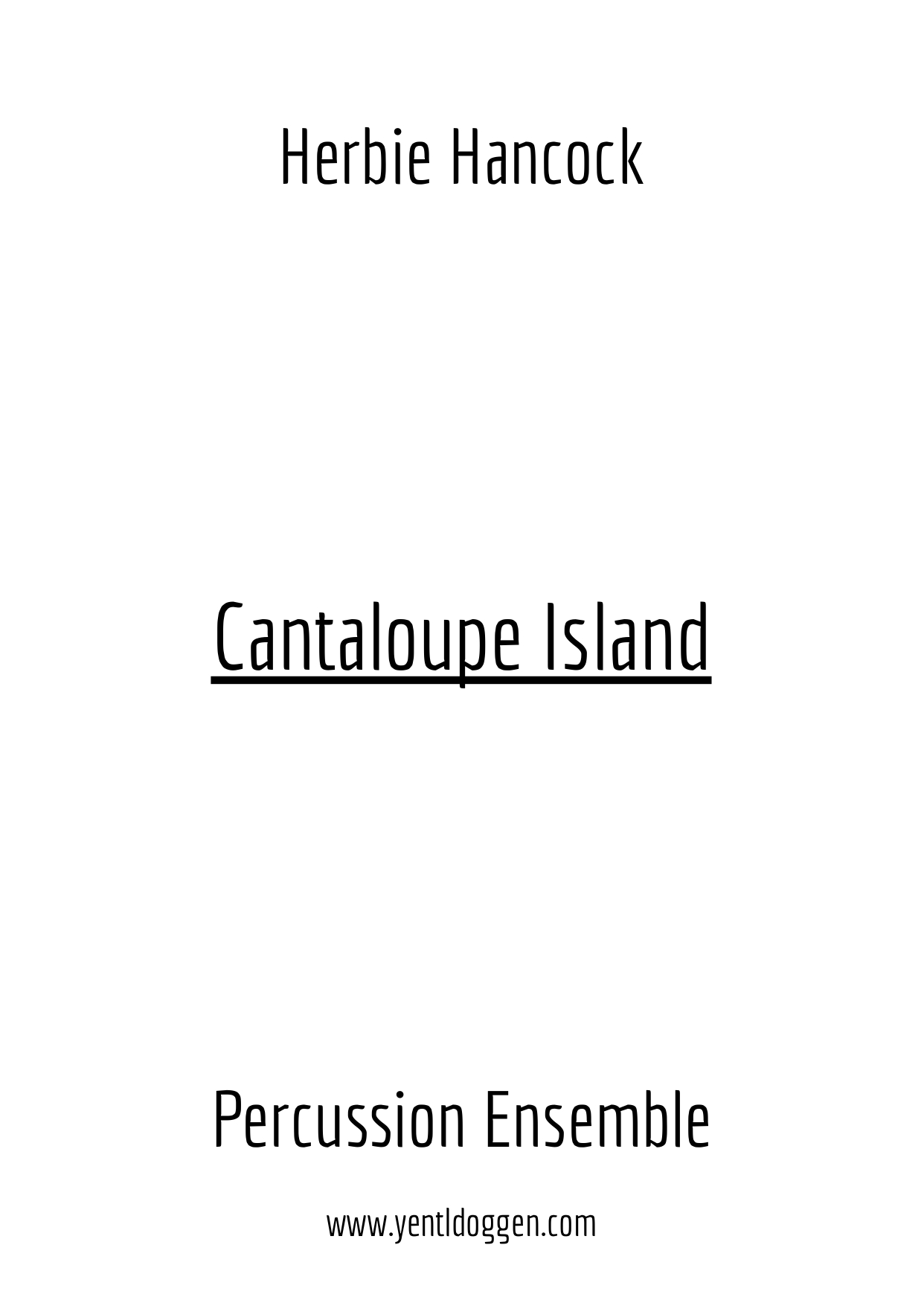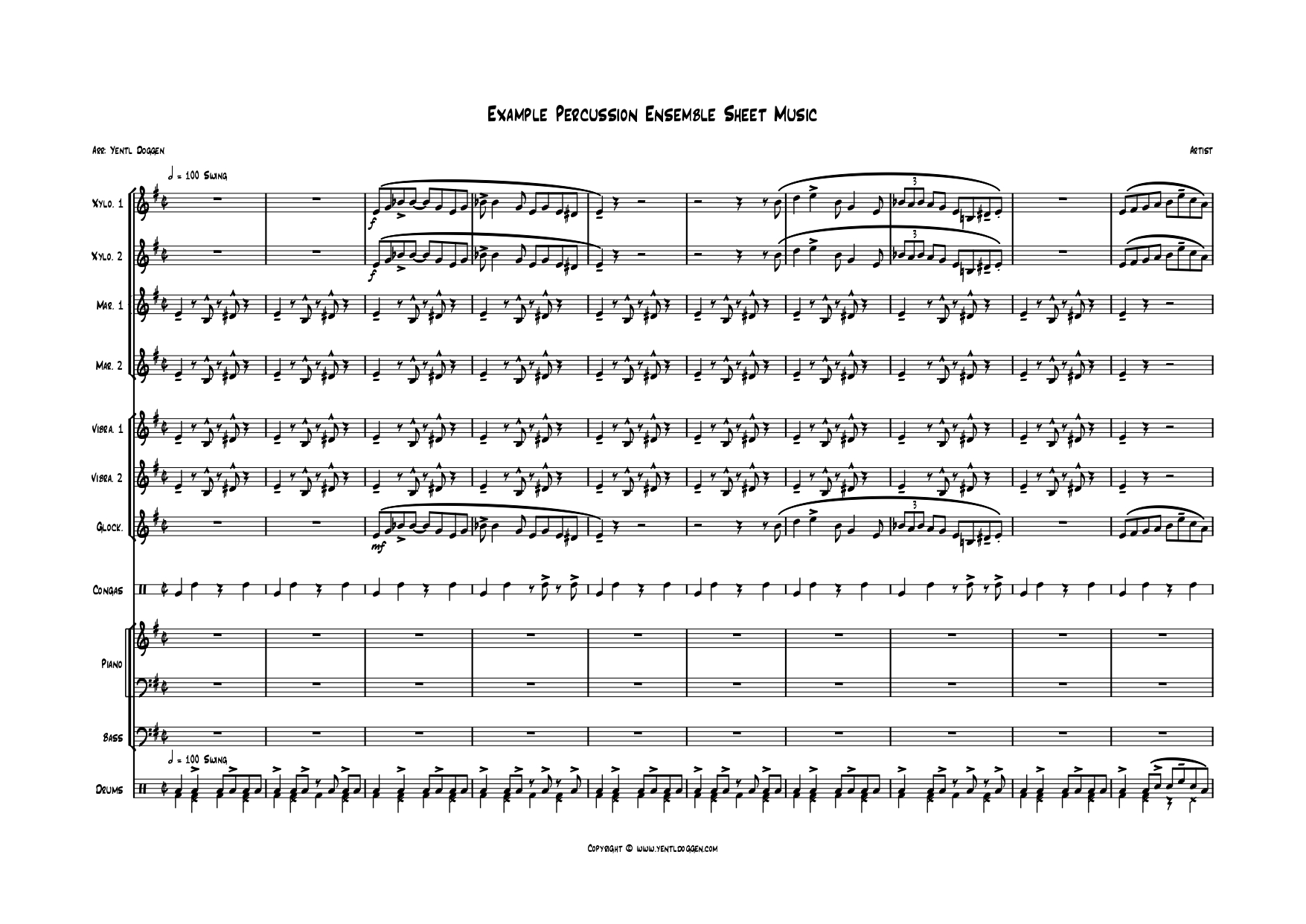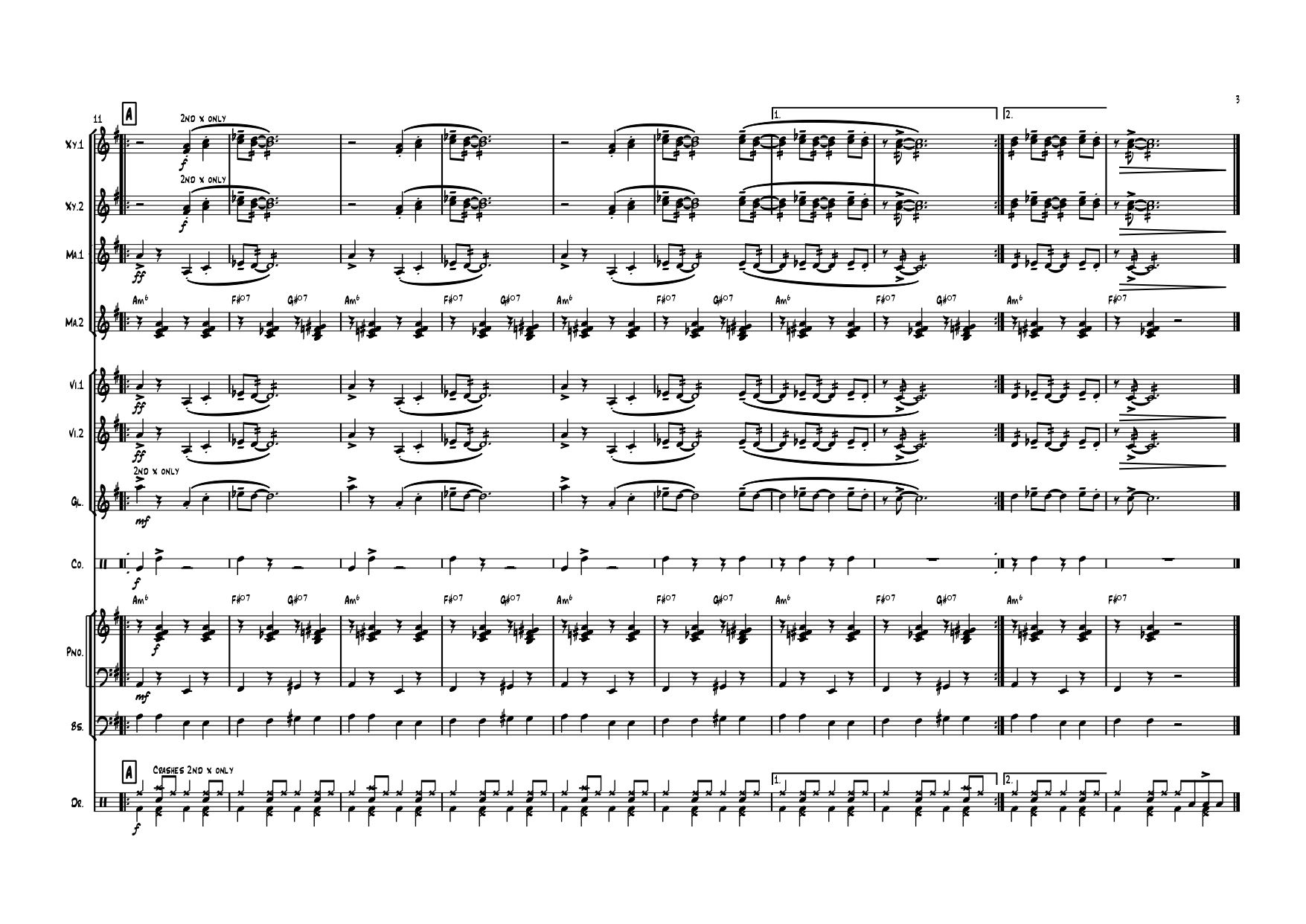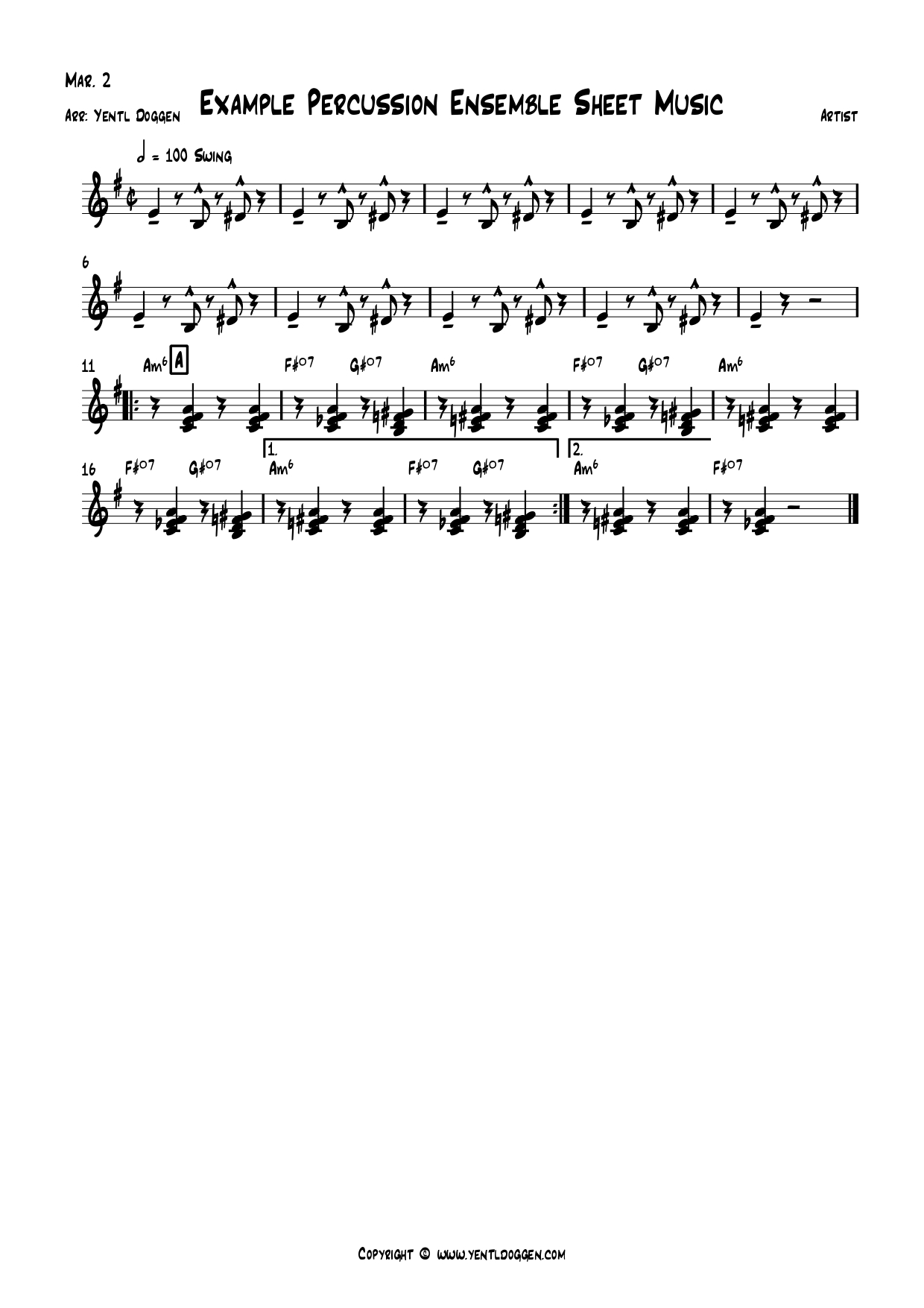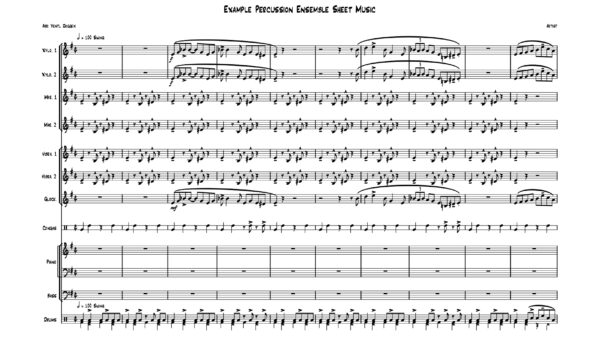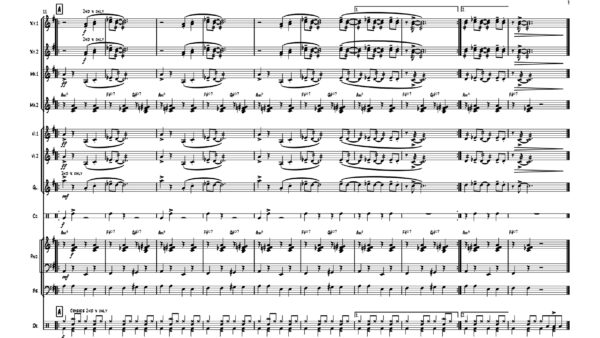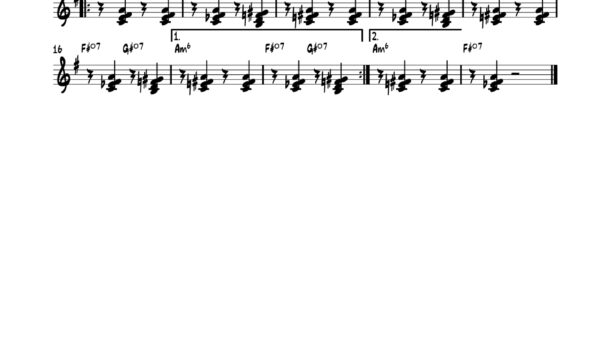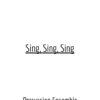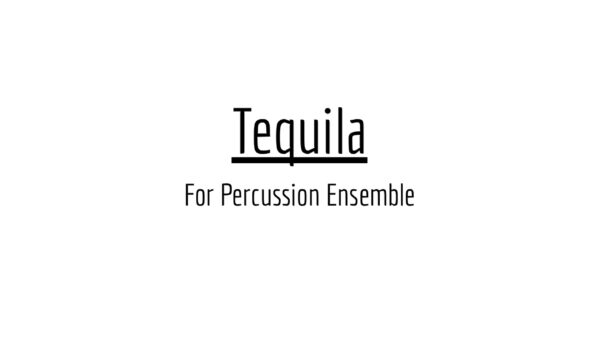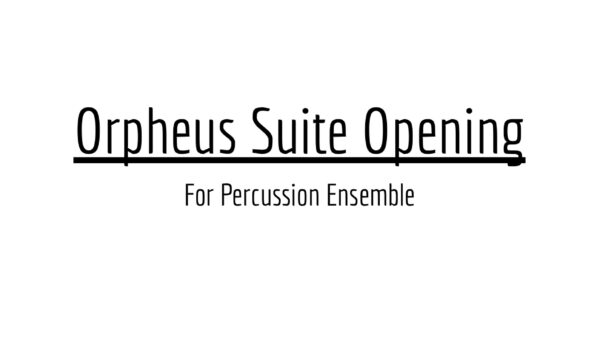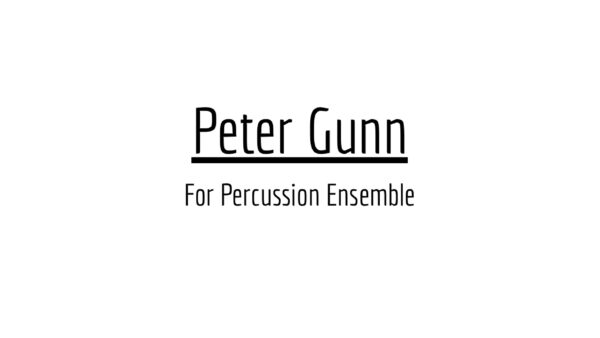Cantaloupe Island for Percussion Ensemble | Full Score PDF
Digital download (PDF) for the Cantaloupe Island for Percussion ensemble sheet music.
Cantaloupe Island
Herbie Hancock composed and recorded the 1964 jazz standard Cantaloupe Island for his album Empyrean Isles. The album under Blue Note Records features his 1960s Miles Davis quintet bandmembers Ron Carter, Tony Williams and Freddie Hubbard. Later, in 1993 the jazz-rap group Us3 sampled Cantaloupe Island for their single Cantaloop (Flip Fantasia). A year later, their version of the song was awarded gold by the Recording Industry Association of America for selling over 500,000 copies!
The percussion ensemble arrangement is a little mixture of both songs. It uses the melodic material Us3 uses in Cantaloop (Flip Fantasia). However, the song’s feel relates more to the jazzy, laid-back style of the Cantaloupe Island version by Herbie Hancock. Performance-wise, the piece should feel like that, jazz with a wink to hip-hop.
The final arrangement version of Cantaloupe Island for Percussion ensemble dates back to 2015. I wrote the song for the Drum- & Percussionband Paal, and they were the first ensemble to perform it at one of their concerts. The arrangement was inspired by Herbie Hancock’s Watermelon Man, which we played for years before I became the band’s artistic director. To have a song in the same vibe and style, which wasn’t too hard to play, we started playing Cantaloupe Island. The video below gives a relatively good example of how the arrangement is meant to sound.
Cantaloupe Island for Percussion Ensemble:
Xylophone
If you have ever played one of my percussion ensemble arrangements, you know how much I love my xylophone parts. The arrangement for Cantaloupe Island is not any different. The xylophone is responsible for the melody line throughout the entire song. However, this statement must be taken with care as the background melody will also be played by the xylophone. The difference is made clear by playing forte against mezzo-piano.
The second page starts with a bar that is open for solos. It is feasible to stretch this as long as suitable. Playing a solo on the xylophone is possible, depending on the player’s skills and can start anywhere within the blues scale of F minor. If another instrument takes the solo, the xylophone must keep the background melody quiet.
In some parts, the marimba and xylophone communicate with each other. First, the marimba plays a lick and later, the xylophone answers that lick. If the marimba and xylophone parts are doubled on the same instrument, it is fun to let the players change places during these licks. Make sure to look at the video to see how exactly this works!
Marimba
To ensure that the melody in the xylophone stands out and gets some mid-range underneath, the marimba also plays the melody line. However, where the xylophone plays the background melody, the marimba plays the piano part. In the solo section, the background melody from the xylophone is played by the marimba. By preference, only when the xylophone plays the solo. In no way should the background melody be too loud and overrule the solo.
In some parts, the marimba and xylophone communicate with each other. First, the marimba plays a lick and later, the xylophone answers that lick. If the marimba and xylophone parts are doubled on the same instrument, it is fun to let the players change places during these licks. Make sure to look at the video to see how exactly this works!
Vibraphone
Since Cantaloupe Island is a song by jazz pianist Herbie Hancock, the piano part is crucial. As the vibraphone’s clear and high-pitched sound works well with the sound of a funky piano, I have the vibraphone double the piano. The vibraphone part is self-explanatory and must ensure not to play louder than the piano.
Glockenspiel
I do admit that the Glockenspiel part isn’t complicated or very interesting. Although, I do think it is of crucial importance. I’ve always told my Glockenspiel player to be the little bird in the tree. Nobody notices until it’s gone. The Glockenspiel, throughout the entire song, keeps that background melody going. That background melody should be present but almost unhearable. It is a complex and vague question, but it is great when it finds the perfect balance in the song.
Maracas, tambourine and congas
Over the years, I’ve played this piece with several percussion ensembles, and each time, it makes my percussion players feel underrated. Are their parts interesting? No, they aren’t. Are their parts important? Yes, they are. These parts fill up the song and make it sound like it should.
Bass, timpani and Drums
As in most jazz and funky-jazz-related songs, the bass and drum parts form the beating heart of the ensemble. If the drum part is played correctly, it works perfectly with the bass underneath it. If possible, a funky bass guitar should play the bass part. Although, if not, a marimba in the lower register satisfies. The timpani brings an extra touch to this combination and works well with the bass guitar. These three parts make or break the song, and the rest of the ensemble should build on these instruments’ foundation.
In the open solo, communication with the drums is essential. It is the drum part that, after the open solos, has another four-bar solo and ensures the rest of the ensemble is quiet. Only the percussion parts and timpani can play during the drum solo to give it some extra foundation. If desired, the drummer can do a more extended solo, although I’ve only written down four bars.
Piano
Super recognizable and essential in a Herbie Hancock song is the piano part. If the bass and drums are responsible for this arrangement’s rhythmic foundations, the piano is responsible for the melodic basis. The piano part is pretty straightforward and works well with all the musical material presented by the mallets.
Playing the solo in Cantaloupe Island can go everywhere, although the blues scale on F minor is an excellent start to building a solo. The piano is my prefered instrument for the open solo; if so, it can leave the lick written down behind. The other instruments can create the foundation for the piano during his time to shine. It is up to the soloist to choose how long this open solo continues.
My website has multiple ways to keep in the loop with music and travel-related updates. Make sure to follow my Instagram and Facebook pages to get the latest content on your socials. To get the updates in your mailbox, subscribe to the newsletter. I will post plenty of free drum lessons and other music and drum-related advice on this website in the future! Check out the other music education posts if you haven’t already!


